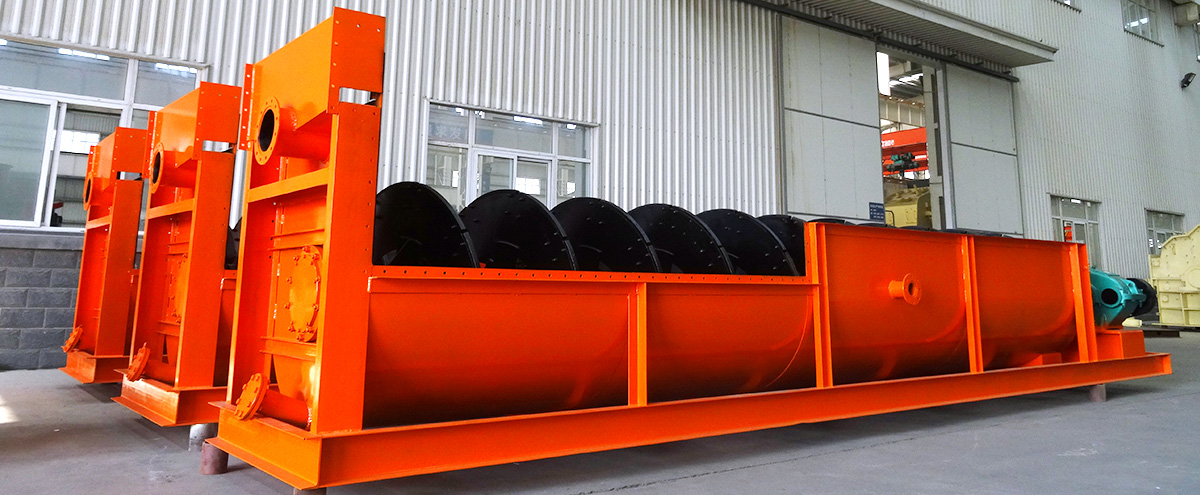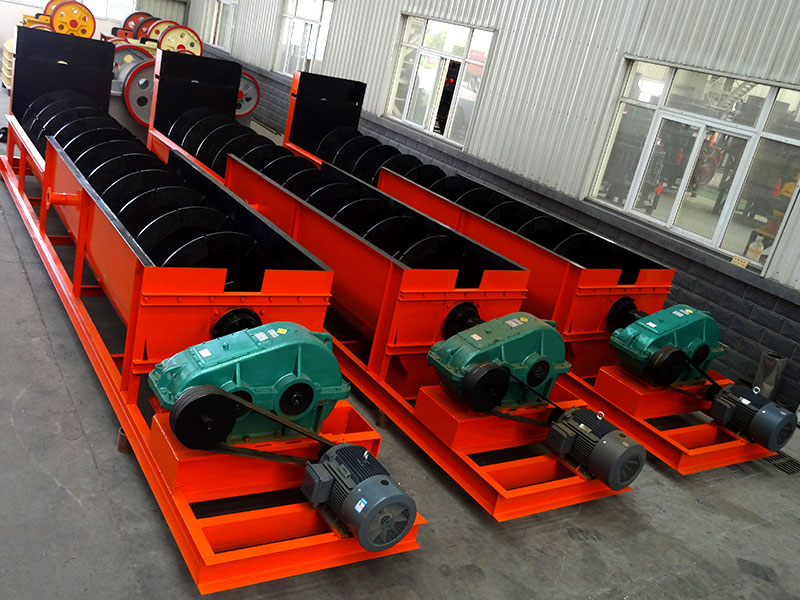

As an important mineral processing equipment, FTM Spiral classifier is widely used in mineral processing field, matched with the ball mill in the closed-circuit cycle. They can be used for shunt mineral sand, classifying sand and fine mud in some gravity mills, grading the size of ore dressing pulp, as well as de-sliming and dehydration operations. It mainly uses the principle that different settling velocity in the liquid of different sizes solid materials to classify, which belongs to the mechanical classification.The spiral classifier produced by FTM mainly includes high weir single helix, high weir double helix, sunk-type single helix, and sunk-type double helix.
1. The classifier adopts sealed immersed bearing, which reduces the damage of water and mineral pollution to engine body.
2. The powerful independent lifting equipment and the wear-resisting lining board with bolt mounting type can reduce abrasion and prolong the service life of spiral classifier.
3. Long narrow groove can make the best agitation effect.
4. Large enough settlement area prolongs the suspension time of the material in water.
5. The appropriate depth and area of pulp pool and helical structure can achieve the best control of classification strength.
The spiral turns slowly by the motor and reducer, the chute must be installed gradient on the foundation. The obliquity that between the bottom of chute and level is 12゜~18゜30′, in overall side it forms the deposit pool. The mine slurry comes into deposit pool along the chute side. As a result of mixing by spiral, small grain floats out of liquid surface and discharges from an overall side. The big grain deposits to the bottom of chute and discharged by spiral from the sand discharging hole and comes into the ball mill to grind again. The size of obliquity will affect flooding granularity. The rotary speed of spiral will affect the flooding size.